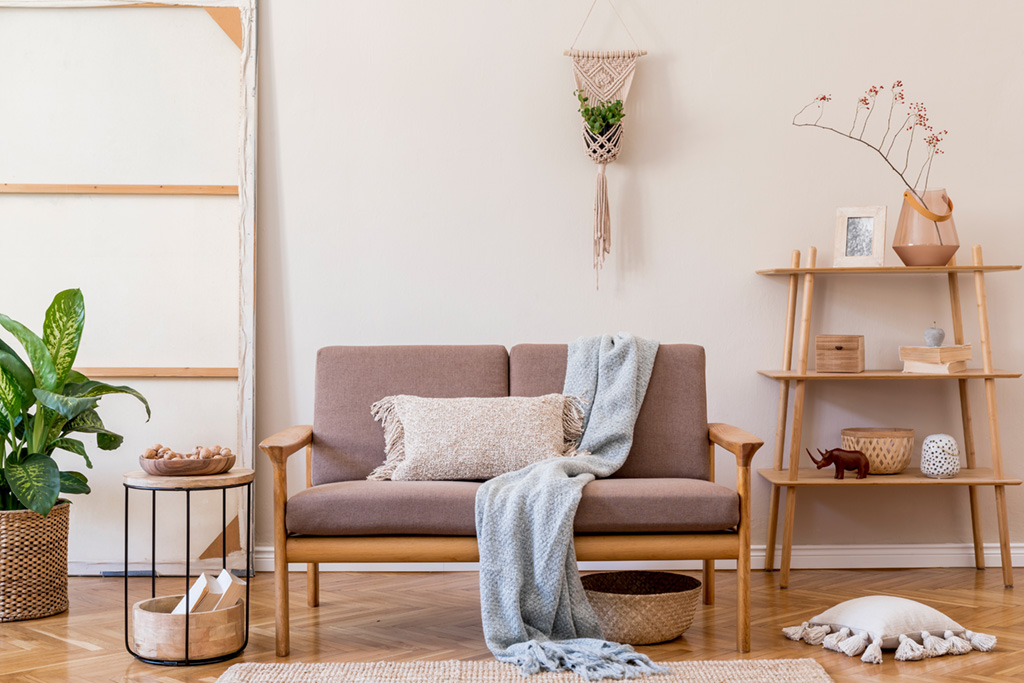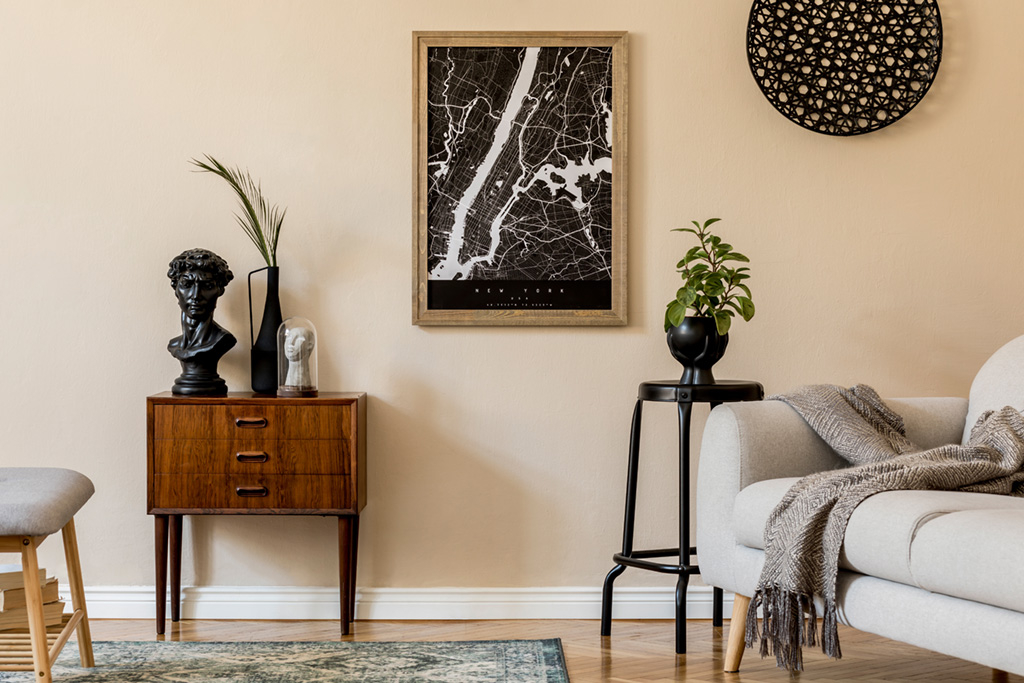
Try This Japanese-Scandinavian Design Style in Your Home
Japan and Scandinavia are at opposite ends of the vast Eurasian continental area, so you might not expect them to have many commonalities. However, they share a deep love for their homes and regard them as important places. While their design styles differ at their core, these countries’ design aesthetics are the perfect combination of comfort and simplicity.
Hygge and Wabi-Sabi Meet

-
In America, people often use the word cozy to describe design that emphasizes comfort. It's a compliment in American culture, but for Danes, it's an integral part of their lifestyle, known as "hygge" (pronounced hoo-gah).
Hygge became popular in the 1950s alongside the modernist movement in Europe and America, which was a movement resistant to realism and eccentric art. Not only do Danes champion comfort, they also honor minimalism and togetherness when designing a space; their design aesthetic is characterized by clean lines, light colors, and minimal furniture.
About five thousand miles away, Japanese people use the term “wabi-sabi” to reflect their belief that there is beauty in imperfection. The phrase means they embrace what people from a Western culture may deem as quirky and inconvenient in the home.
Japanese design elements include sleek, rich colors and handmade pieces made from natural materials. Japan has gorgeous cherry blossoms and flowing rivers between mountain ranges that are reflected in the country’s home art pieces and decor, which honors the land they live on and brings them closer to nature.
The best of Scandinavian and Japanese influences have merged harmoniously to create Japandi—simplicity and functionality infused with natural richness and uniqueness.
The Principles of Japandi

Hygge and wabi-sabi are great on their own, but the blend of the two is an appealing mix. Some may find Scandinavian design inviting for its coziness and minimalism, while others may find Japanese design serene and beautiful. Japandi attracts many who want to adopt the best of each, which can be achieved by following these principles.
Love and need everything
You need to wholly love and need something to use it in your Japandi design. There are no rules about what you can and can’t include—just make sure it serves a purpose to your living space’s functionality.Champion quality over quantity
Everything from your furniture to your utensils should be high quality. This principle goes hand-in-hand with loving everything you own. If you love an item, you should use it until it is no longer usable, instead of routinely changing out or buying new items. What constitutes high quality is up to you, as it's relative to your needs.Respect and honor the earth
Giving back to the earth is a big part of Japandi. The style encourages you to consider that you live in an area that was once unspoiled nature. Japandi honors nature by promoting sustainable, natural materials and incorporating colors and decor that match the natural world.Embrace imperfections
Not every piece in your home will be perfect, nor should it be. Every piece represents a part of your life, whether it’s furniture with coffee or paint stains, or handmade bowls and vases with imperfections. To fully adopt Japandi, you must throw away everything you believe about perfection.
Japandi in Your Home

The beauty of Japandi is that you can choose which elements you like from Japan and which you prefer from Scandinavia, and adjust accordingly. There is no one-size-fits-all approach to Japandi design. However, these tips can guide you to successfully creating your Japandi-inspired space.
Choose handmade
Handmade pieces are a Japandi favorite. When you opt for handmade furniture and art, you’re choosing to allow unique, well-made, and sometimes perfectly imperfect pieces into your home. This helps support artists and their craftsmanship. Find handmade anything for your home on sites like Etsy that promote independent artists and creators.Keep your home simple
Avoid overcrowding walls with decor and choosing furniture that leaves little space to move around in your living areas. Stick to simple, practical, and intentionally arranged furniture. There should be no need to step around or over anything.
In the words of famed organizer Marie Kondo, ask yourself: “Does this spark joy?” If not, you are making your home too complex. Choose items that bring joy, and simplicity will follow. A good rule of thumb is to look at a piece, and if you think about it more after you’ve left the store or website, you should revisit and purchase it. If you’ve forgotten about it or are hesitant if it’s for you, it’s best to leave it be.Pick basic shapes
The shapes in your home will set the tone for Japandi, and, while you can’t do much to change your home’s structure, you do have control over the shapes placed inside it. Choose shapes without complicated structures and designs, like solid circles and squares that are uncomplicated, but elegant. For instance, when choosing chairs, select those with solid backs instead of chairs with detailed and busy patterns.Stick to natural materials
Not only do natural materials last longer, they are also the key to honoring the earth in your Japandi home design. Choose furniture made of reclaimed wood, wicker, bamboo, and other sturdy, natural materials. Pick items made with 100 percent cotton, hemp, or linen for upholstery and bedding. One trick is to pick outdoor furniture pieces that can also work inside. Most outdoor furniture is comprised of natural materials since it needs to be able to withstand the elements.Use warm neutrals and muted colors
A central point in Japandi is creating a minimalist home without it feeling cold. Loud, bold colors and stark whites have the opposite effect, so choose muted tones. The Japandi color scheme is where Japanese inspiration shows most: using warm neutrals and muted earth hues. If you desire a pop of color, use soft shades of pink, blue, and green, and avoid dark colors as much as possible.
Share this minimalist home design trend with friends and family.

Posted in July 2021 on Apr 05, 2021